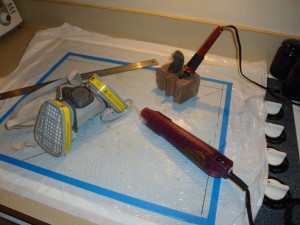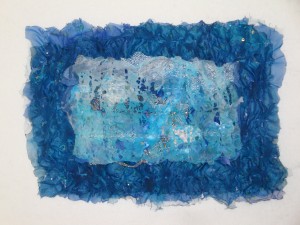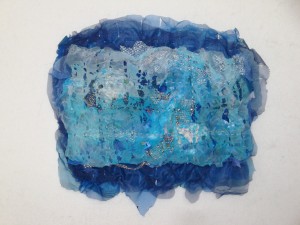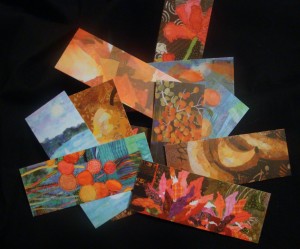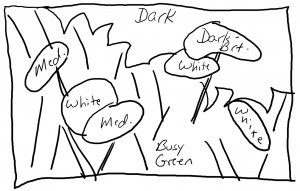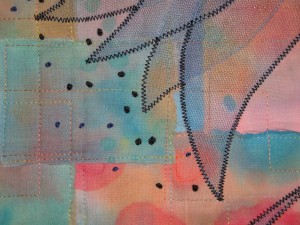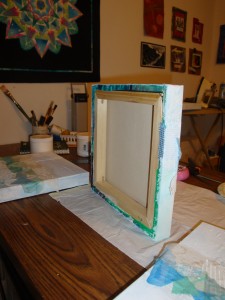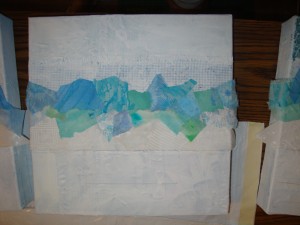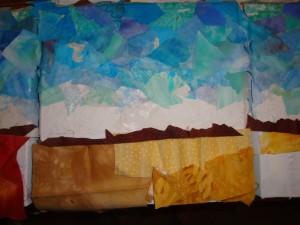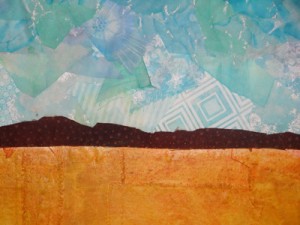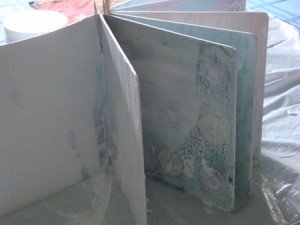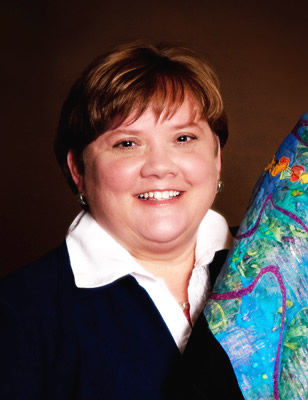Set Up for Melting Sheers
I thought you might be interested in my set up for melting sheers.
Since melting plastic releases toxic fumes, I always do it under my cook top’s exhaust vent, with the fan on high. Plus, I always wear a respirator with acid gas filters.
The cook top is glass, so it’s a good working surface. However, when working with sheers, I want to work on white, so I put down a white kitchen garbage bag as my first layer. On top of that, I place a large piece of glass, which is my actual working surface. (I just bought replacement glass for a picture frame, and taped the edges.)
For “cutting” sheers, I use a soldering iron – the kind you can buy in craft stores. A half brick works extremely well as a support for this very hot item. The other hole in the brick holds fine steel wool. I use this to clean the tip of the soldering tip when it gets too gunky. If I want to cut approximately straight lines, I use a metal ruler as a guide.
A heat gun is used for melting and distressing the synthetic fabrics. This is sold in the stamping section of craft stores.
You can purchase a respirator AND the needed filters for $23, shipping included, by following the links above. This is a very worthwhile investment.
Ellen Lindner
